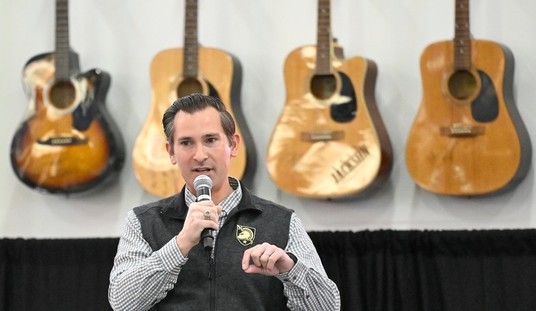“In keeping with the administration’s proactive approach” to swine flu, the White House has announced, President Obama on Saturday declared the disease “a national emergency.” It’s the second such declaration, with the first in late April. And in case you didn’t know what “proactive” meant before, now you do: “hysterical.”

Just nine weeks ago the President's Council of Advisors on Science and Technology issued its report with a “plausible scenario” of 30,000 to 90,000 deaths peaking in “mid-October.” It’s now late October and past time for a reality check.
The Centers for Disease Control and Prevention (CDC) no longer releases specific swine flu case or death numbers, so the agency merely said Friday it had killed more than 1,000 Americans and hospitalized over 20,000 in the almost 7 months since the outbreak began. The website flucount.org, basing its figures on media reports, lists about 1,100. The FluTracker website counts a much higher 2,800.
But even that largest figure is about the number of Americans the CDC estimates seasonal flu kills every 10 days during the season, specifically 36,000 deaths and 200,000 hospitalizations annually.
Yes, swine flu disproportionately afflicts the young. But it’s simply a larger slice of much smaller pie. Hence among 47,000 college students afflicted seriously enough with CDC-defined “flu-like illness” to seek medical help, according to an American College Health Association running survey, there have been only78 hospitalizations and zero deaths.
Nor is there reason to think things will worsen.
In Australia and New Zealand, flu season has ended and almost all cases were swine flu. Yet even without a vaccine, those countries have reported significantly fewer flu deaths than normal.
Worldwide in seven months swine flu has claimed almost 5,000 people according to the World Health Organization, at the low end of the range the agency estimates die from seasonal flu every seven days.
Recommended
Further, the virus isn’t mutating into a worse form; it appears the outbreak may already have crested in some states; and in fact a Purdue University study in the journal Eurosurveillance calculates the national epidemic should peak this week.
So where’s the fire, Mr. President?
Well, in fairness there’s plenty of smoke.
The CDC reports that the percentage of visits to emergency rooms and outpatient clinics by people worried they have the flu – and worried enough to seek medical attention – is incredibly high: over 7 percent. That’s double from just six weeks ago and the highest since 2003. In Region Six, encompassing Texas and nearby states, it’s almost 10 percent.
Some swamped emergency facilities have erected tents to accommodate the overflow, while patients at others wait up to 24 hours for a bed.
But it’s not the virus itself driving these masses; it’s flu frenzy. The CDC reports that only 37 percent of samples from its laboratory surveillance system are testing positive. That means only about a third of the samples that even doctors (much less scared patients) suspect may show swine flu actually do so. In the especially panicky region Region Six, merely a fifth indicate swine flu – the lowest level in months.
Moreover, many of those emergency visitors may actually have flu but with symptoms so mild that in previous years they’d have stayed home and self-treated.
But panic is what this pandemic is all about it. It’s driven by a perpetual motion machine of journalists writing about scared people, thereby creating more scared people to write about. And clearly the Obama Administration stoked it with that first health emergency declaration and with the President’s Council report.
It’s not just that the panic was predictable; it was predicted. The “only realistic aspect of President’s Council scenario, I wrote in another newspaper in early September, “is that emergency facilities could be swamped. But rather than with truly sick people, it will be with the mildly ill and the worried well.” Ironically, this new emergency declaration can only help bring porcine flu panic to greater heights.
Why issue it, then? Maybe because government, H.L Mencken has observed, ever seeks “to keep the populace alarmed (and hence clamorous to be led to safety) by menacing it with an endless series of hobgoblins, all of them imaginary.”
Perhaps the Obama administration doesn’t deserve such cynicism in this matter. Perhaps. But if it reacts so poorly to a non-crisis, what can we expect when it’s faced with a real one?
























Join the conversation as a VIP Member